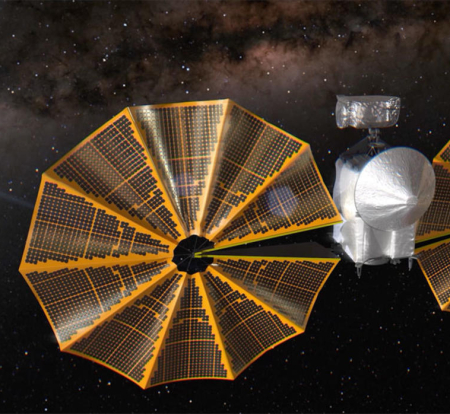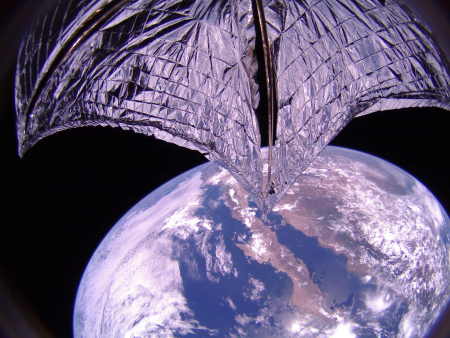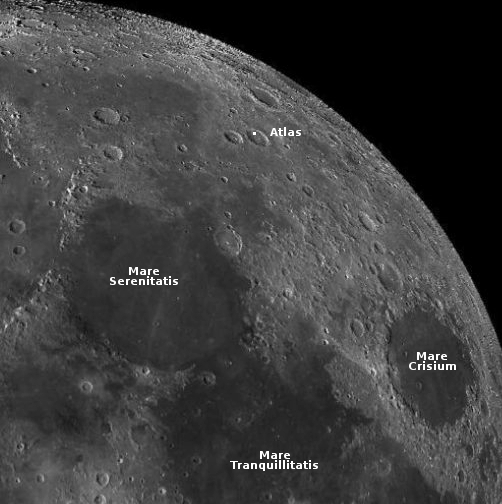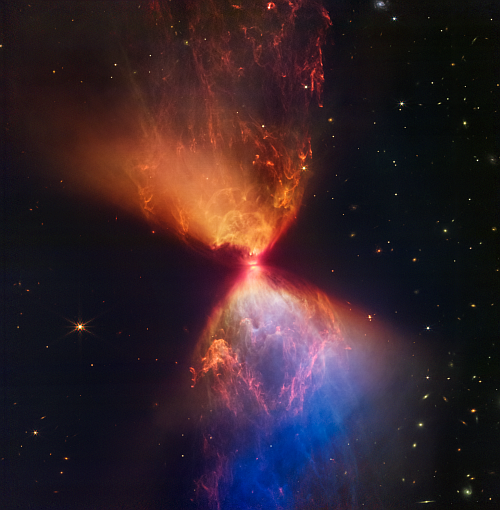Lucy engineers again attempt to complete deployment of solar array

Artist’s impression of solar panel
On November 7, 2022, the Lucy science team made another attempt to complete the deployment of one of the spacecraft’s two solar arrays, as shown in the graphic to the right. After launch that array failed to deploy properly, and though later attempts have gotten it mostly open, it has not latched tight.
On Monday, Nov. 7, the spacecraft was instructed to point toward the Sun and operate the array deployment motors for a short period of time. As expected, the latest attempt deployed the wing incrementally forward, but it did not latch. The operation did succeed in providing the team with data to evaluate the array’s status and ascertain any changes since the last deployment attempt on June 16.
During this analysis, the team identified that a small vibration occurred as the unlatched array interacted with the spacecraft’s attitude controller while the array was pointed toward Earth and at a cold temperature. The vibration did not occur as a result of the deployment activity itself. While this vibration is too small to pose a risk to the spacecraft in its current state, further array deployment attempts have been paused while the attitude controller is updated to resolve this issue. In the meantime, the spacecraft was reoriented so that the array is warmer, and the team found that the vibration is not present. The team will re-evaluate further redeployment activities once the updates to the controller are checked out on the spacecraft.
In other words, engineers have decided to halt further deployment attempts until they understand fully the cause of this vibration.
At present, the spacecraft is in good health, and the array, only a few degrees short of full deployment, is producing more than 90% of its expected power, more than enough to run the full mission.

Artist’s impression of solar panel
On November 7, 2022, the Lucy science team made another attempt to complete the deployment of one of the spacecraft’s two solar arrays, as shown in the graphic to the right. After launch that array failed to deploy properly, and though later attempts have gotten it mostly open, it has not latched tight.
On Monday, Nov. 7, the spacecraft was instructed to point toward the Sun and operate the array deployment motors for a short period of time. As expected, the latest attempt deployed the wing incrementally forward, but it did not latch. The operation did succeed in providing the team with data to evaluate the array’s status and ascertain any changes since the last deployment attempt on June 16.
During this analysis, the team identified that a small vibration occurred as the unlatched array interacted with the spacecraft’s attitude controller while the array was pointed toward Earth and at a cold temperature. The vibration did not occur as a result of the deployment activity itself. While this vibration is too small to pose a risk to the spacecraft in its current state, further array deployment attempts have been paused while the attitude controller is updated to resolve this issue. In the meantime, the spacecraft was reoriented so that the array is warmer, and the team found that the vibration is not present. The team will re-evaluate further redeployment activities once the updates to the controller are checked out on the spacecraft.
In other words, engineers have decided to halt further deployment attempts until they understand fully the cause of this vibration.
At present, the spacecraft is in good health, and the array, only a few degrees short of full deployment, is producing more than 90% of its expected power, more than enough to run the full mission.




